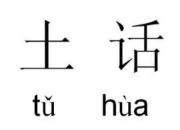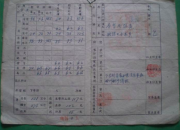初中英语不可数名词语法
时间:2021-08-31初中英语不可数名词语法大全
不可数名词量的表示
物质名词
a. 当物质名词转化为个体名词时。
比较: Cake is a kind of food. 蛋糕是一种食物。 (不可数)
These cakes are sweet. 这些蛋糕很好吃。 (可数)
b. 当物质名词表示该物质的种类时,名词可数。
This factory produces steel. (不可数)
We need various steels. (可数)
c. 当物质名词表示份数时,可数。
Our country is famous for tea.
我国因茶叶而闻名。
Two teas, please.
请来两杯茶。
抽象名词有时也可数。
four freedoms 四大自由
the four modernizations四个现代化
物质名词和抽象名词可以借助单位词表一定的数量。
如:
a glass of water 一杯水
a piece of advice 一条建议
不可数名词我们在英语中涉及到的有很多,上面是老师为大家带来的具体介绍。
初中英语语法大全:动词的种类
关于英语中动词的种类知识,希望同学们很好的掌握下面的内容学习。
动词的种类
动词是表示动作或状态的词,按其词义和在句子中的作用可分为行为动词,连系动词,助动词和情态动词。
1.行为动词
行为动词可分为及物动词 (vt)和不及物动词(vi),及物动词表示动作或状态,有完整的词义,能单独作谓语,后跟宾语;不及物动词表示动作或状态,有完整的词义,能单独作谓语,但后面不能直接跟宾语,如要带宾语则与介词或副词构成短语。
如:
More and more people study English.(vt)
The students are listening to the teacher carefully.(vi)
2.连系动词
连系动词本身有一定的词义,但不能独立作谓语,必须与表语一起构成谓语。常用的连系动词有 be, get, turn, become, look, feel, grow, seem, sound, taste, smell等。
如:
Our country is becoming stronger and stronger.
It feels damp.
3.助动词
助动词本身无词义,不能单独作谓语,只能和主要动词一起构成谓语动词,表示否定,疑问及动词的时态、语态、人称和数等语法特征,助动词有 be,do,have,shall,will等。
如:
How do you usually come to school?
The children are playing yo-yo now.
4.情态动词
情态动词本身有一定的意义,但不能独立作谓语,只能和主要动词原形一起构成谓语,表示说话人的语气和情态。情态动词没有人称和数的变化。情态动词有 can (could),may(might),must, need, ought to, dare等。
如:
Can I help you?
- Must we go now? -No, you needn't .
a. can与be able to的用法有所区别。can只用于一般现在时和过去时,指本身有能力的"能";be able to用于各种时态均可,指须经过努力而"能"。
b. must与have/has to的用法。must表示说话人主观认为"必须",只用于一般现在时和一般将来时;have/has to表示客观需要,意为"不得不",它可用于各种时态。
c.need和dare既可作情态动词也可作行为动词。
以上对动词的种类知识的内容讲解学习,相信同学们已经能很好的掌握了吧,希望同学们在考试中取得很好的成绩。
初中英语语法大全:动词不定式的形式
对于英语的'学习中,关于动词不定式的形式知识点的内容,我们做下面的讲解学习哦。
动词不定式的形式
1.作主语。 如:
To learn English is very important.
但实际上不定式作主语常用 it来作形式主语,而将不定式移至谓语动词后作真正的主语。
如上句可表达为:
It's very important to learn English.
2.作表语。 如:
My idea is to ring him up at once.
3.作宾语。 如:
I have decided to go to Binjiang Primary School.
4.作宾语补足语。
a. ask, want, teach, tell, know, would like, allow等动词后面接动词不定式作宾语补足语。
如: The policemen asked him to get off the bus.
b. hear, see, look at, feel, watch, notice, listen to等动词后接不带to的动词不定式作宾语补足语。
如: We often see Miss Li clean the classroom.
c. let, make, have这些使役动词后接不带to的动词不定式作宾语补足语。但在被动语态中这些不带to的都须带上to。
如: In those days the bosses often made the workers work day and night.
d.动词help接动词不定式作宾语补足语,可带to也可不带to。
如: Can you help me (to) carry the heavy bag?
5.作定语。
a.与被修饰词有动宾关系。如:I have something important to tell you.但如果不定式动词为不及物动词,后面的介词千万不要省略。
如: Maybe they have three rooms to live in.
b.与被修饰词有主谓关系。
如: Mr Liang is always the first to come and the last to leave.
c.与被修饰之间只有修饰关系。
如: I have no time to play cards.
6.作状语,表示目的、原因、方法、方向、结果等。
如: I'll go to meet my friend at the railway station.
7.不定式复合结构"for sb. to do sth" 作主语时,常用"It is +adj+ for
of sb. to do sth"的句式。形容词good, bad, polite, unkind, kind, ice, clever,
right, wrong, careful等用"It is +adj +of sb. to do sth."
其他形容词用 for。
如:
It's dangerous for you to ride so fast.
It's very kind of you to help me.
8.动词不定式与疑问句who, what, which, when, how, where, whether等连用。
如: I don't know when to start.
He didn't tell me where to go.
但上面结构相当于一个从句,故上述句子也可表达为:
I don't know when we'll start.
He didn't tell me where he would go.
注意:
a.有些动词或动词短语不能带不定式,只能接动词的-ing形式。
如: enjoy, finish, keep, mind, miss(错过),be busy, go on, keep on, be worth, practise等。
如: The peasants are busy picking apples.
Would you mind my opening the door?
b.有些动词后可接不定式,也可接动词的-ing形式,但意思不同。
如: Lu Jian forgot to post the letter.(该寄但还没做)
Lu Jian forgot posting the letter.(已经寄过信了)
They stopped to sing a song.(停止在做的工作而去做另一件工作)
They stopped singing.(停止正在做的工作)
希望上面对动词不定式的形式知识的内容讲解学习,同学们都能很好的掌握,相信同学们会取得很好的成绩的哦。
初中英语语法大全:短语动词的四种类型
同学们认真学习,下面是老师对短语动词的四种类型知识总结。
短语动词的四种类型
动词与介词、副词等构成的固定短语,叫短语动词。主要有四类:
一、动词+副词
有的一般不跟宾语,如go ahead, fall behind, get up, lie down, go up, run out, give in, stay up等;有的可以跟宾语,如put out, carry out, give up, wake up, check in, eat up, fill in, find out, fix up, hand in, mix up, look up, make out, turn down, work out等。
注意:宾语是名词时,放在副词前面或后面都可以,但若作宾语的是人称代词时,就只能放在动词和副词之间了。如:
We’ve decided to put the meeting off (=put off the meeting) . 我们决定把会议推迟。
We’ve decided to put it off. 我们决定将它推迟。(不说put off it)
二、动词+介词
如ask for, care for, call for, break into, deal with, call on, look for等。后面必须接宾语。如:
I don’t care for tea. 我不喜欢喝茶。
三、动词+副词+介词
如look forward to, put up with, looked up to, go in for, go along with, date back to, look down on, keep up with, add up to, run out of等。如:
She soon caught up with us. 她很快赶上了我们。
四、动词+名词+介词
如take care of, pay attention to, make use of, make contribution to做出贡献等。如:
Take care of your brother while I am away. 我不在的时候,你要照顾好你弟弟。
希望上面老师对短语动词的四种类型知识的讲解学习,同学们都能很好的掌握,相信同学们会学习的很好的哦。
初中英语语法大全:及物动词与不及物动词
关于英语中及物动词与不及物动词的知识学习,我们做下面的内容讲解。
及物动词与不及物动词
根据其后是否带宾语,动词可分为及物动词(带宾语)和不及物动词(不带宾语)。如:
When will he arrive? 他什么时候到?(arrive 不带宾语,为不及物动词)
He reached Beijing yesterday. 他昨天到达北京。(reach 带了宾语,为及物动词)
有的动词既可用作及物动词也可用作不及物动词:
The child is playing. 这小孩在玩。(不及物用法)
The child is playing the piano. 这小孩在弹钢琴。(及物用法)
He is writing. 他在写字。(不及物用法)
He is writing a letter. 他在写信。(及物用法)
The boy is reading. 这男孩在阅读。 (不及物用法)
The boy is reading a magazine. 这男孩在看杂志。(及物用法)
上面对及物动词与不及物动词知识的内容讲解学习,希望给同学们的学习很好的帮助,相信同学们会学习的更好的吧。
初中英语语法大全:实义动词与非实义动词
下面是对英语中实义动词与非实义动词知识的内容讲解,希望同学们很好的掌握。
实义动词与非实义动词
根据其含义和句子功用,动词可分为实义动词和非实义动词(包括时态助动词和情态助动词等)。如:
He bought a story book. 他买了一本故事书。(buy 为实义动词)
He has read the story book. 他已读过这本故事书。(has 为时态助动词,read为实意动词)
He should read the story book. 他应该读读这本故事书。(should 为情态助动词,red为实义动词)
上面对实义动词与非实义动词知识的内容讲解学习,相信同学们已经能很好的掌握了吧,希望同学们考试成功。
【关于初中英语不可数名词语法大全】相关文章:











